This post is in collaboration with my friends at Stark Bro’s, my #1 online source for fruit and nut trees, shrubs and other edible plants. All opinions and words are my own.
I’ve packed multiple dwarf and semi-dwarf fruit trees into my small front yard garden. And I can say that small fruit trees are perfect for anyone short on space but big on dreams—whether you’ve got a patio, balcony, tiny yard, or just don’t want a giant tree taking over.
Fruit trees may seem like a fantasy if you are gardening in a small space. Fear not, a home orchard, with small fruit trees is in reach, even if you’re an urban gardener or otherwise space-restricted!
Keep reading and I’ll walk you through 33 fruit trees that stay compact, grow in containers, or can be trained to fit your garden—plus top varieties and how to keep trees small.
Keeping Fruit Trees Small
Heads up, this list includes fruit trees that range from just 2 feet tall up to 15 feet at maturity. Many of them can be grown in containers, which helps limit their size even more, just like how bonsai works.
You can also keep trees small with regular pruning or by training them as espaliers—flat against a wall or fence. I just planted a peach and a cherry espalier along the front of my house, and I can’t wait to see them fill in.

Similar to espalier, the spindle system is a commercial row growing system that trains dwarf fruit trees—especially apples—to grow upright with a central leader and short side branches 2-4 feet apart. This year, I plan on trying this with pears and maybe Asian pears in my trellis area.
Two things to keep in mind when you’re shopping for small fruit trees:
- Rootstock matters – Grafted trees get their size from the rootstock, not just the variety. The same fruit variety can grow to different sizes depending on the nursery, so always check the mature height listed.
- Go for self-pollinating – If you’re short on space, pay attention to pollination needs. Some fruit trees need a partner to bear fruit, while others are self-pollinating.
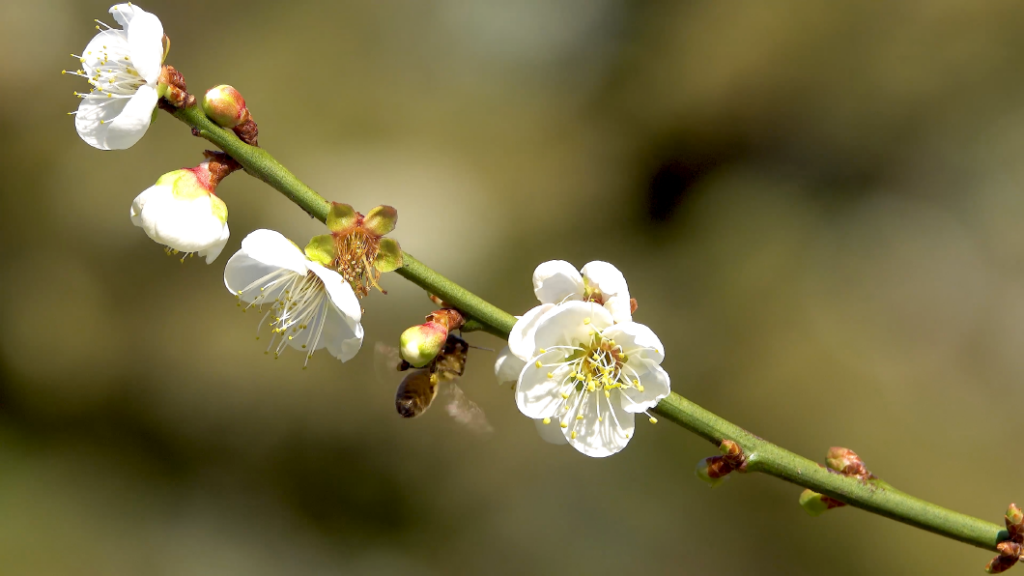
Dwarf and semi-dwarf fruit trees can be grown in small gardens and yards, containers and indoors. Here’s our top variety picks for 33 fruits like lemon, apple, orange, pineapple, peaches and more.
Let’s get into our list!
1. Columnar & Dwarf Apples
When going with a small apple tree, you can add a dwarf version of your favorite apple in many cases. Honeycrisp, Gala, and Mcintosh are just a few of the varieties that are available in scaled down versions. Columnar apples, like the Tangy Green Fruit Snack Apple and Stark Crimson Spire are another option for small-space fruit growers. I’m so excited, I just ordered a couple of these and I’m planning on a row of these near my blackberries. Columnar apple trees may also be referred to as spires, colonnades, or urban trees. True to their name, they grow in a narrow upward form, usually just 2-4 feet across, reaching 8-10 feet in height. They can even be grown in pots!
2. Crabapple
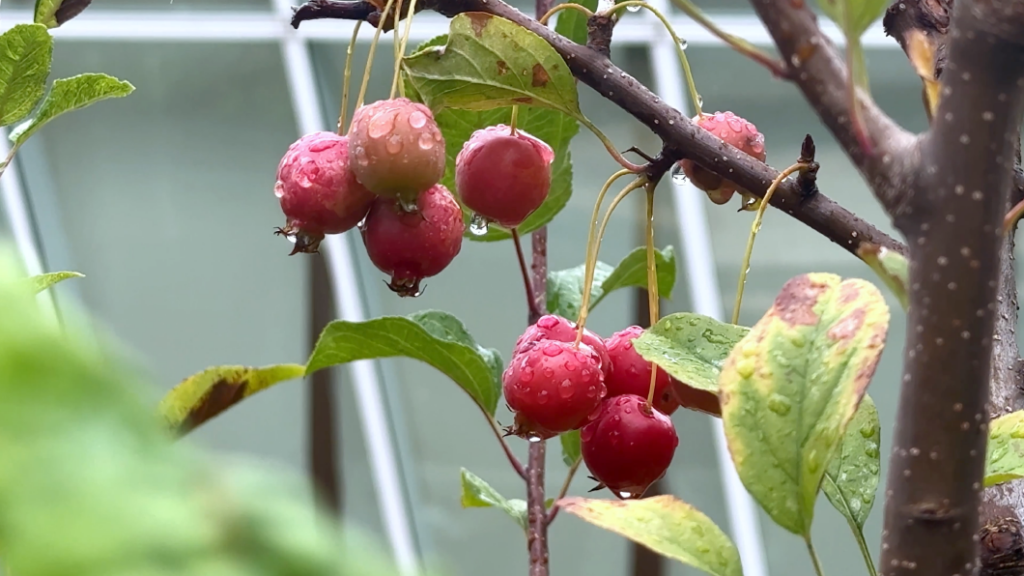
Flowering crabapple trees are a close relative to apples, but more sour and tart. In addition to having smaller fruit, 2 inches or less, crabapple trees are small, some around 6 feet at maturity, making them great for small-space gardening. Dwarf crabapple trees like the Lollipop crabapple, Whitney crabapple, or the Sargent Crabapple tree keep things even more compact.
3. Pear
If you’re looking for a small pear tree, just like with many fruits on this list, you have choices between semi-dwarf and dwarf varieties. Popular pear varieties like Anjou and Bartlett have dwarf options that grow 8-10 feet in height and 6-7 feet wide at maturity.
4. Asian Pear
Bringing together qualities from both pears and apples, Asian pears are a great choice for miniature fruit trees. Dwarf options topping out at 8-10’ tall include the 20th Century Asian pear, Chojuro Asian pear, and Peggy Asian pear. Asian pears do require the presence of at least one other Asian pear tree for cross-pollination, so keep that in mind!
5. Figs
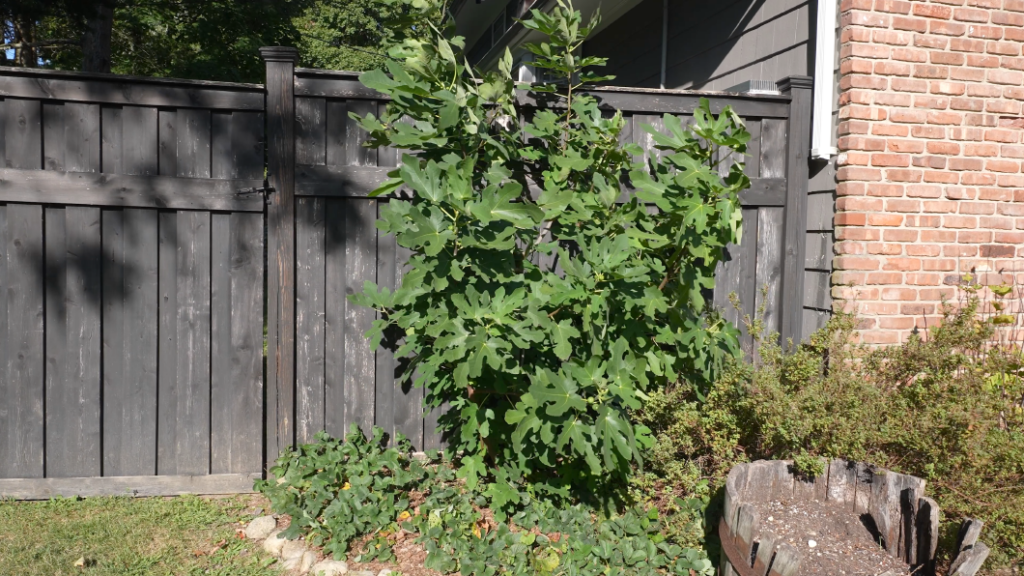
Dwarf figs are easy to grow and produce a surprising amount of fruit! My Little Ruby Fig Tree from Stark Bro’s is at the end of my foundation bed and is about 5 foot tall by 5 foot wide. The Fignomenal Fig is even smaller at 2-3 feet tall. Because figs are only hardy in U.S. zones 7-10, many people also grow them in containers and bring them indoors over the winter.
6. Peach
A miniature peach tree is a tasty addition to the home garden. I’ve recently added the Newhaven peach, but the Loring peach and GaLa peach are other popular varieties available in a 8-10’ tall dwarf size. Peach trees are self-pollinating, which is great if you only have room for one tree.
7. Cherry
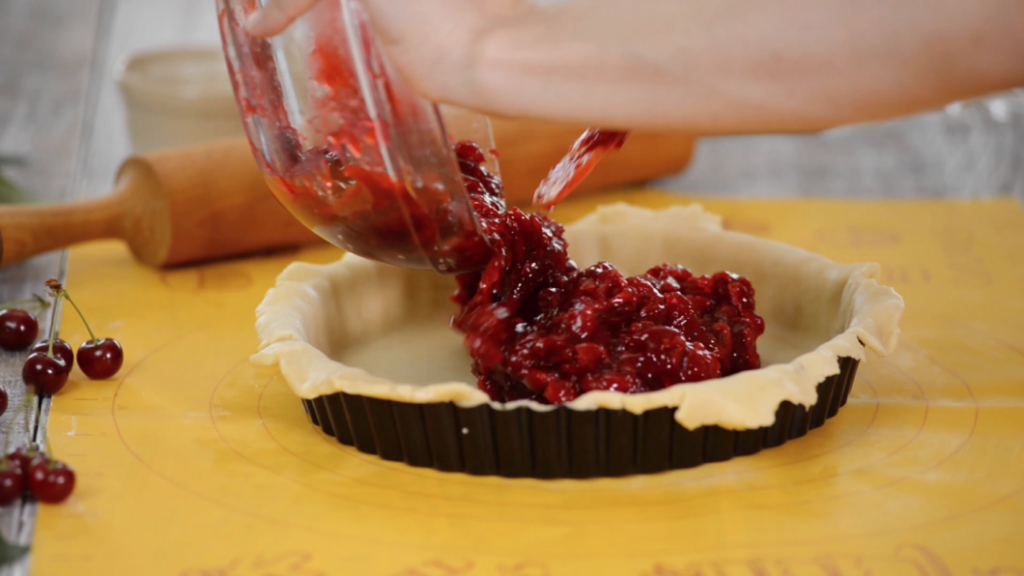
Small cherry trees are not only functional (YUM!), but they are beautiful to look at with their pink or white spring blossoms. I have a Lapins cherry, and it should mature at less than 14 feet. Both my peach and cherry I have on a trellis flat against the front of my house, where I plan to prune them to a candelabra espalier design. You can even do a potted cherry! Dwarf sweet cherries, topping out at 10’ tall include Black Tartarian and Emperor Francis. Great options for tart pie cherries include Evans (5 feet high), Montmorency (10 feet high), and English Morello (6 ft high).
Where To Buy Small Fruit Trees
So, you’re probably thinking at this point, that’s great there’s all these cool super tiny varieties that you can grow on your patio or in a small backyard, but where do I get them? I can tell you from personal experience, it is not going to be a big box store, and probably not even a local nursery. That’s how unique some of these varieties are.
So, that brings us to today’s amazing sponsor, a nursery I’ve been buying plants from for almost 15 years—Stark Bro’s. Stark is an online nursery that’s been specializing in fruit trees for over 200 years. Ever had a Golden Delicious or Red Delicious apple? They are the ones who originally brought those apples to market.
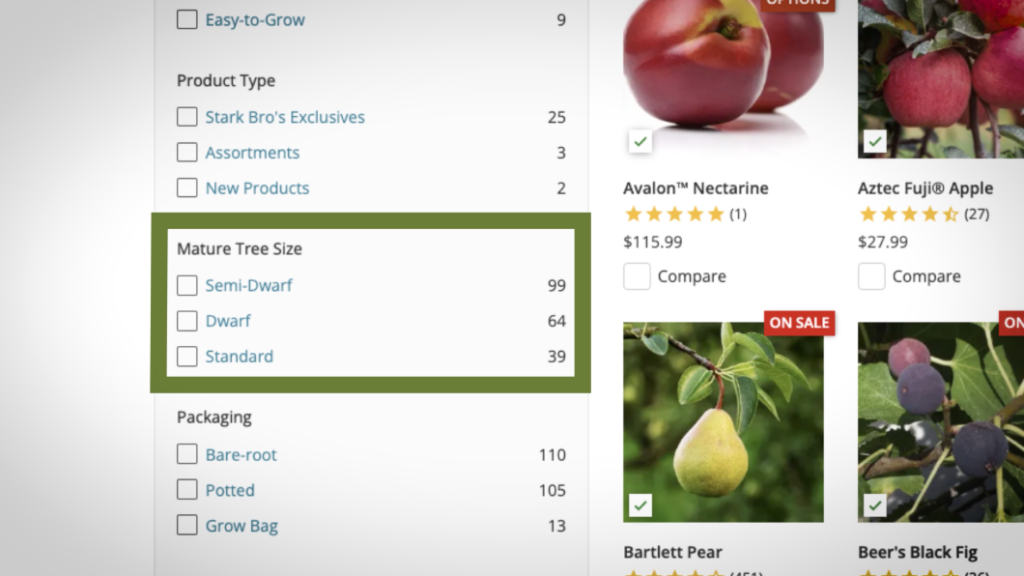
But history aside, if you’re looking to get your hands on some healthy and disease-free fruit trees for your garden, Stark Bro’s is the way to go. Their website has fantastic filters where you can browse by fruit type, zone, dwarf or semi-dwarf size.
If you have room for only one tree—check out their pollination filter for self-pollinating varieties. And if you have room for more, their site will even recommend the best variety for pollination.
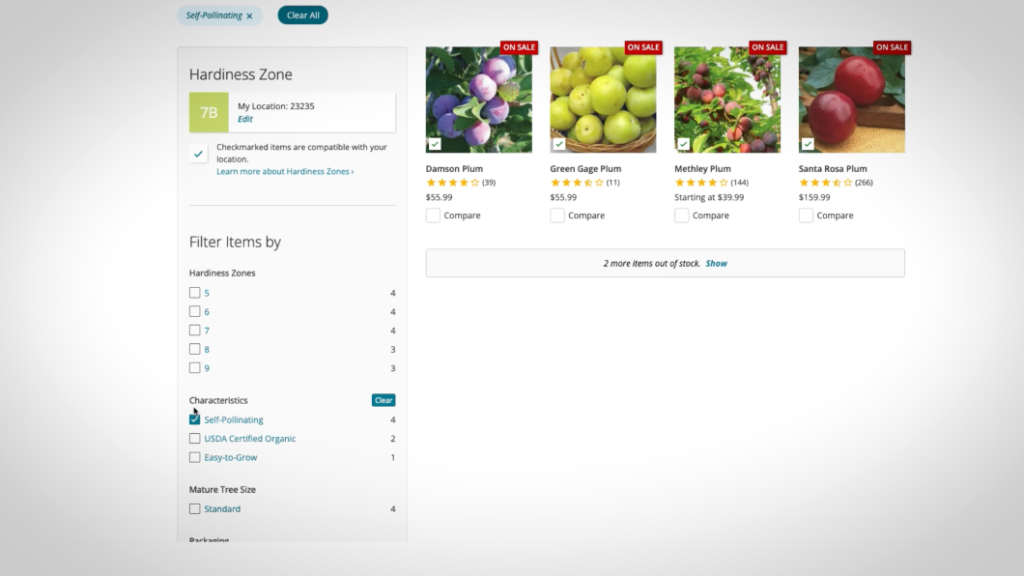
Many of the varieties I’ll mention in the article are available from Stark. Check out our dwarf fruit tree chart for a full breakdown of fruits, varieties, zones, pollination needs, and sizes.
8. Plum
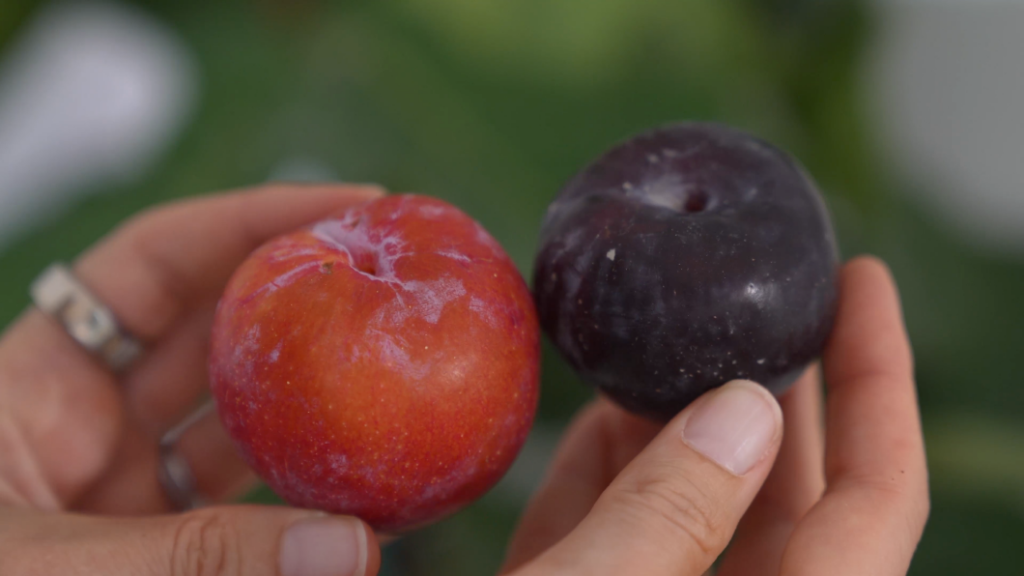
Typical plum trees are known for their large size at maturity, but miniature plum varieties like Superior are great for those gardening on a compact scale! Plum trees are able to withstand some cold, usually suitable for U.S. zones 5-9, with some specialized types able to withstand the chill of zones 3 and 4. Many plums, whether European or Asian, need a pollinator, so if you’re tight on space, make sure to check for that.
9. Nectarine
Nectarines are a “stone fruit” like plums, peaches, and apricots. While they are very similar to peaches (sometimes they’re even called “fuzzless peaches”), they are more challenging to grow than their fuzzy friends. Mini nectarine trees won’t be as cold hardy as some of their relatives, but they are available in dwarf varieties that top out at about 8 feet. Popular types include Garden Delight, Captain Crunch, Fantasia, and Mericrest.
10. Apricot
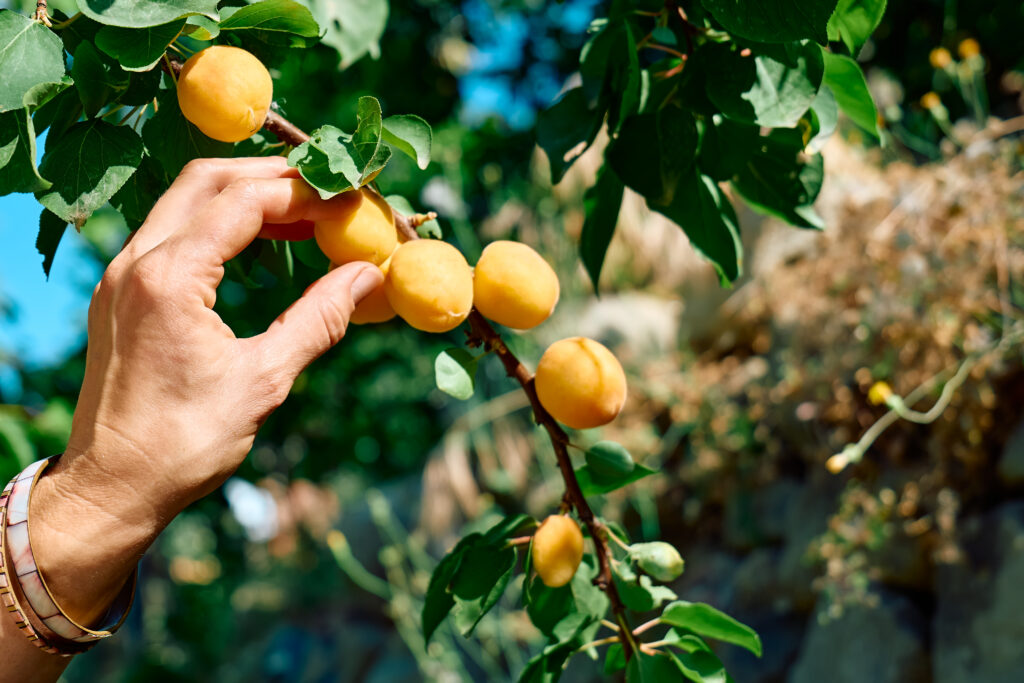
Compact apricot trees can still be quite prolific, and add beauty to the home garden with their spring flowers. They do well in U.S. zones 6-9, and dwarf apricots are 8-10 feet tall. The Pixie-Cot is a variety available in semi-dwarf and mini dwarf sizes. Sugar Pearls is another small apricot tree, that can be 6-15 feet depending on the rootstock.
11. Nectacot
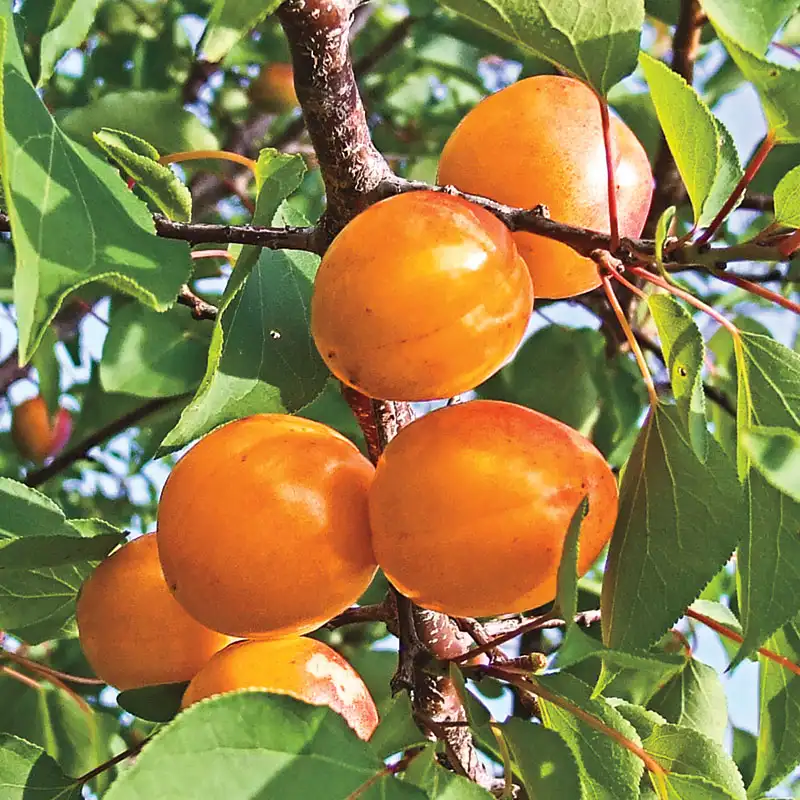
Yes, you read that right, a Nectacot! A hybrid between a nectarine and an apricot, these unique fruits are like a nectarine in an apricot-sized package! Juicy and mild, a popular Nectacot variety is Honey Pearls, reaching just 6-8 feet high.
12. Pluot & Plumcot
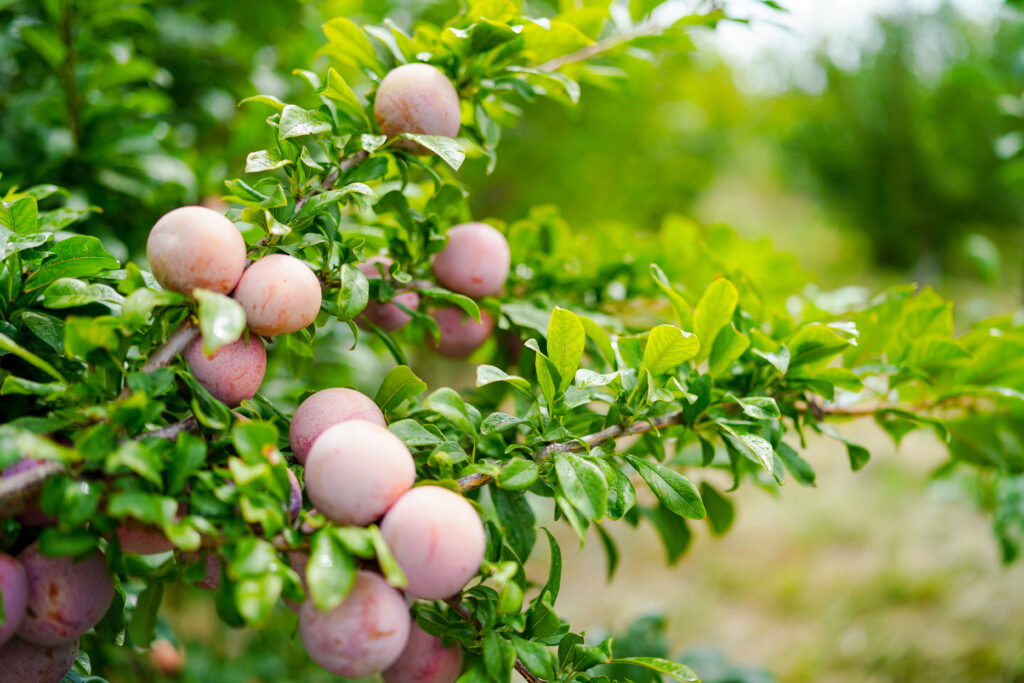
Another hybrid, pluots and plumcots are a cross between a plum and an apricot. A plumcot is a 50/50 plum-apricot hybrid with balanced flavor, while a pluot is about 75% plum and 25% apricot, making it sweeter and more plum-like. A favorite semi-dwarf pluot variety is the Dapple Dandy, also known as the Dinosaur Egg! It manages to combine the flavor of both fruits in a tasty package only 12’ tall. It’s also one of the most cold-hardy varieties out there!
What’s your favorite hybrid fruit? Let us know in the comments.
13. Loquat
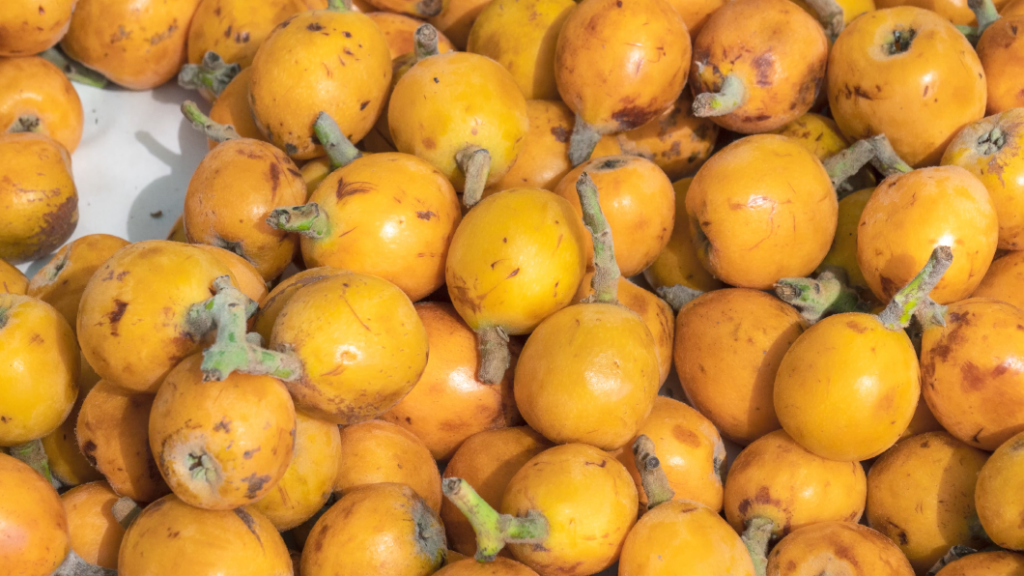
Though loquats look and taste a bit like apricots and have a similar sounding name, botanically, they’re not closely related to apricots, plums, or plumcots. Also known as a “Florida Plum”, the loquat is a sweet fruit that is well suited for growth in a container or when only limited spacing is available. They are a tropical fruit, so will need to be grown in warmer zones or in a container indoors. Coppertone loquat is a popular variety for small-scale growers, reaching only 8 feet at maturity.
14. Guava
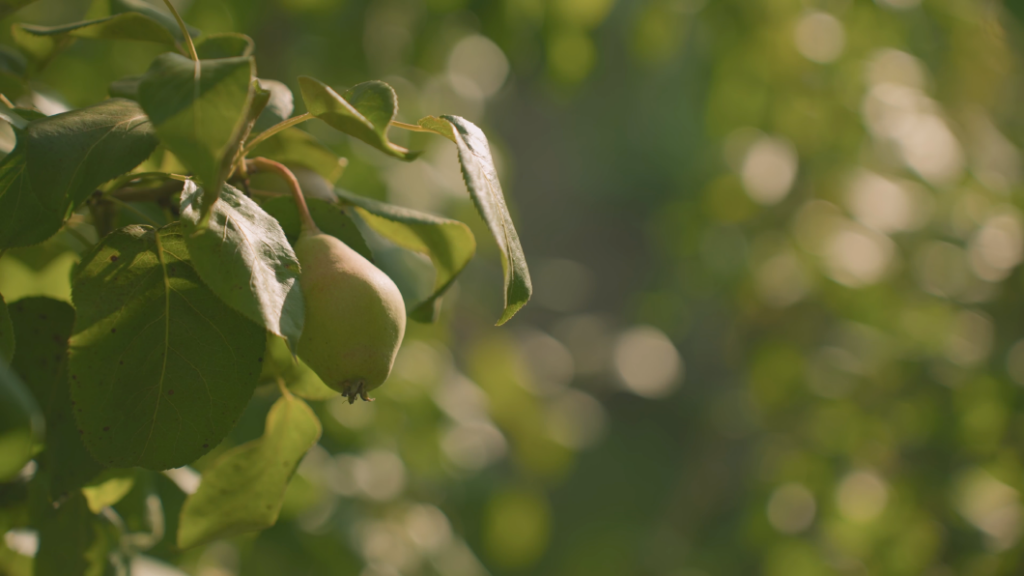
Another tropical fruit, guava resembles a watermelon in color, with small seeds, tasty pink flesh, and a green rind. The flavor of a miniature guava is said to combine notes of strawberry and pear. A guava tree can reach 15-20 feet in height, but can be pruned to the size of your liking and do well in containers. This is a necessity if you aren’t in zones 9-11! Check out the Ruby Supreme variety, which grows to 10 feet tops.
15. Pineapple Guava
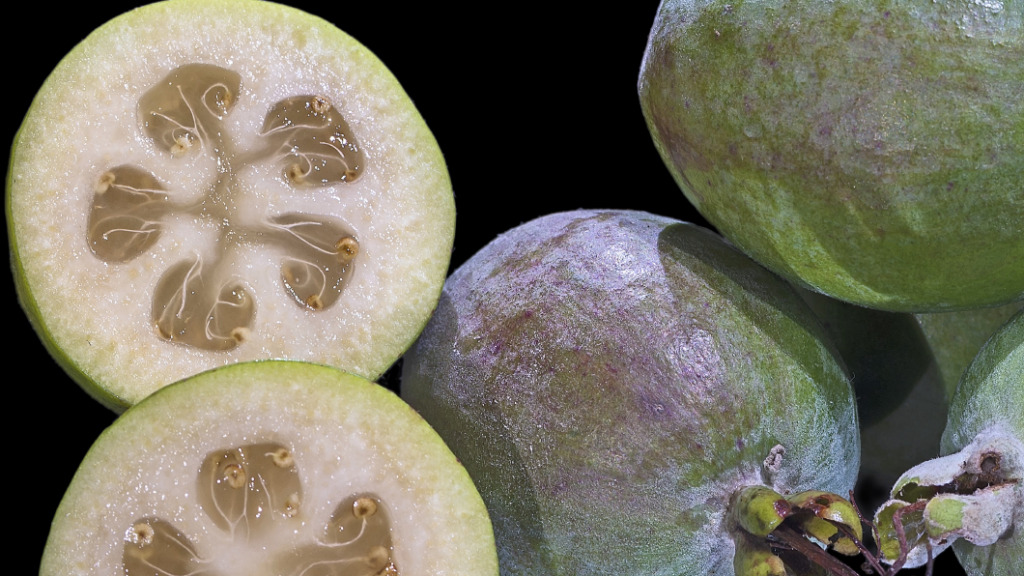
Pineapple guavas aren’t true guavas, but they sure taste tropical—like a mix of pineapple, strawberry, and apple. The tree grows 10-15 feet tall, stays evergreen in U.S. zones 8-10, but can be planted in containers and brought inside for colder areas. It puts out bright, edible flowers and fragrant, kiwi-sized fruit in the fall. Pollinators love it, which is good because you’ll need another plant to cross-pollinate.
16. Pineapple
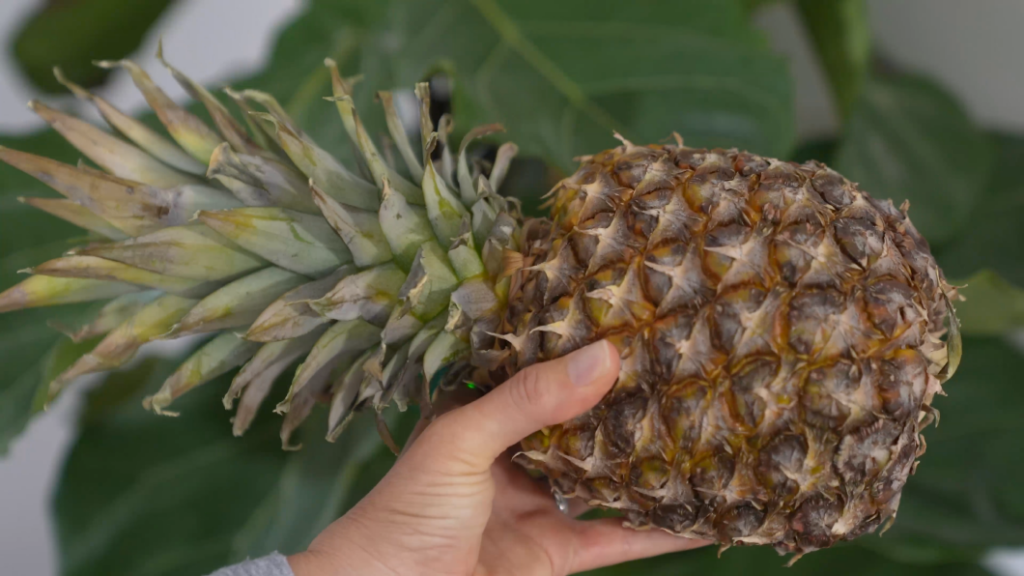
Maybe it’s because the fruit is so big, but I thought pineapple plants were huge! Turns out standard pineapples only grow 3-6 feet tall, so they are perfect for small gardens and patios, no crazy miniature versions required. Pineapples can be grown in containers or outdoors in tropical areas like U.S. zones 9-11. Most pineapple plants are sold simply under the Florida Special variety name.
17. Banana
The Cavendish has held the title of most popular banana variety for decades, and it’s available in a dwarf version that grows only 8-10’ tall! Miniature banana trees make great patio plants with their lush foliage and broad leaves. They also have beautiful flowers before the fruit forms! These are best suited for zones 8-11 but can thrive inside or as indoor/outdoor plants in colder climates.
18. Avocado
Yep, avocados are a fruit! The Condo avocado (8 feet tall) and the self-pollinating Holiday (12 feet) are a great choice for a small space. They are heavy feeders that need rich soil and full sun. They are best suited for tropical zones, but if protected during occasional frosts, they can handle some cooler areas. They can also succeed in well-drained containers.
If you live in a colder climate and have successfully grown “tropical” fruit trees, let us know about your experience in the comments below! We’d all love to hear your tips.
19. Olive
Olives are another fruit we don’t always think of as a fruit! There are several varieties of olives that are suited for dwarf production. Arbequina, at 10 feet high, is one popular compact olive that does well in containers or in the ground. They are perfect not only for fresh eating, but for oil production as well!
20. Pawpaw

A fruit that tastes like Boston Cream Pie? That is the pawpaw’s claim to fame! Though it seems like a tropical import, the pawpaw is actually native to the United States. In fact, they are the largest edible fruit native to North America! Though they can be found in the wild, pawpaws are suitable for small-scale home production, with smaller varieties like the SAA Overleese, Prolific and NC-1 topping out at 12 feet.
21. Persimmon
Persimmons are a unique fruit, with varieties falling under two categories: Asian or American. Some Asian varieties and all American varieties have a dry, bitter taste until fully ripe. Some Asian varieties can be enjoyed when still firm. Asian types are generally smaller than American. Dwarf persimmons, such as the Ichi-Ki-Kei-Jiro variety, grow to about 10 feet tall and are low-maintenance plants.
22. Jujube
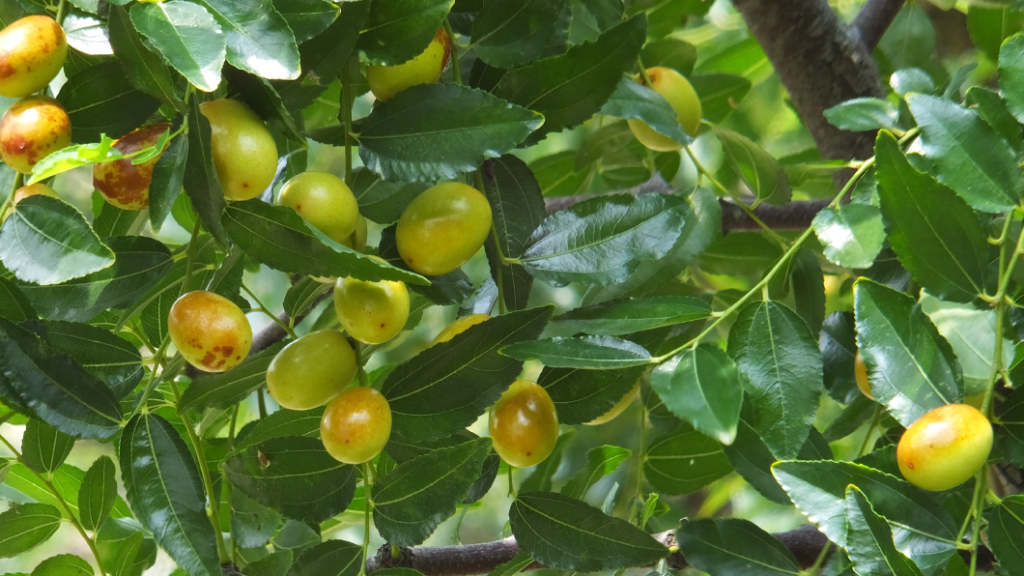
Also known as “Chinese Date,” jujube fruits are sweet, crisp, and about 1½ inches long with a single seed. These drought-tolerant trees grow 15–20 feet tall but can be pruned much smaller. They’re also resistant to pests and disease, and their shiny leaves, fragrant mid-summer flowers, and striking bark make them a beautiful ornamental. Great varieties for home growers include Sugar Cane, Honey Jar, and Lang.
23. Mango
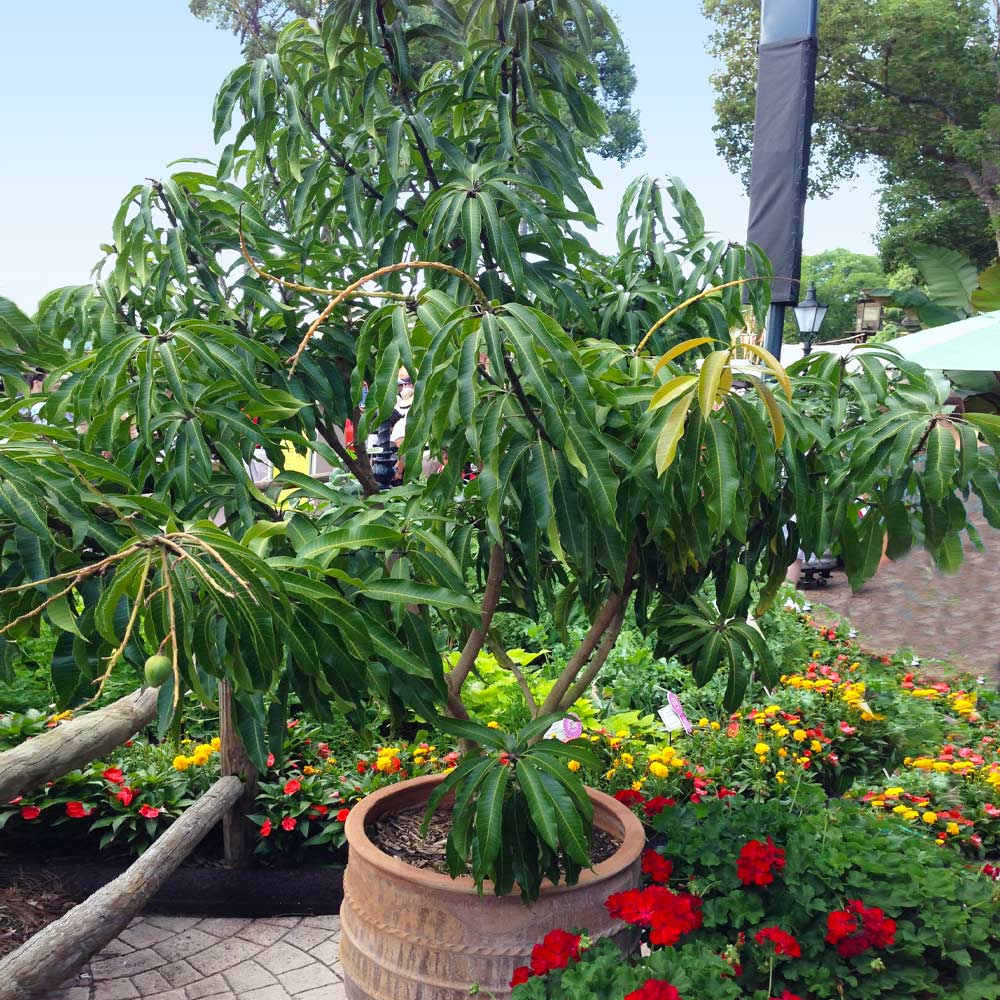
Valencia Pride and Glenn are all compact mango varieties that are perfect for the patio, indoor cultivation, or if you are in a warm zone, your outdoor fruit garden! While both can grow 10-20 feet tall outdoors, they can be kept 4-8 feet tall in containers. Mango flavors range from rich and tropical to honey-sweet, citrusy, pineappley, coconuty, floral, piney, or even slightly spicy, depending on the variety.
24. Dragonfruit
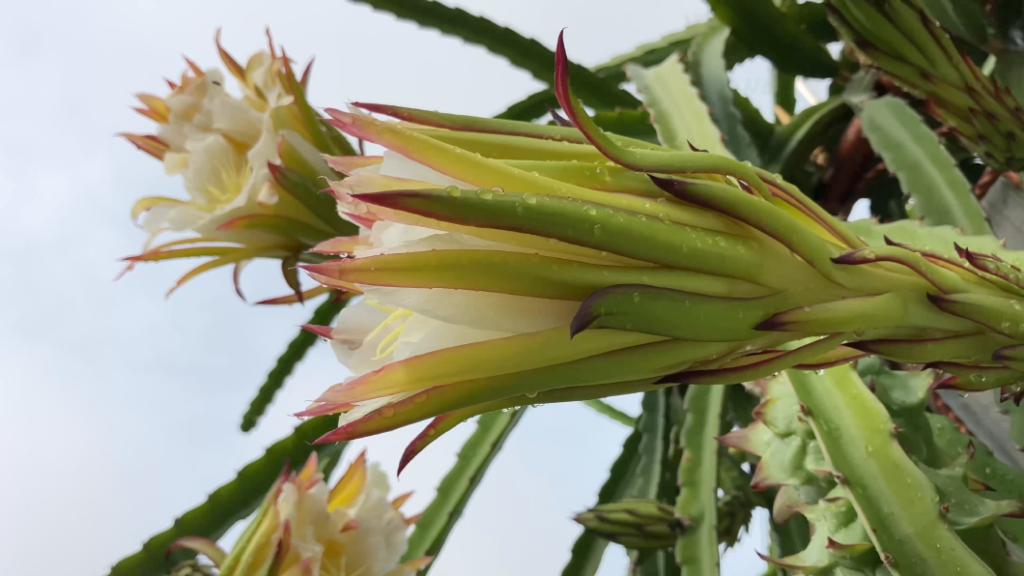
Dragonfruit grow on a cactus-like plant that is striking, with lush vines, a palm-like trunk, pink fruits, and sweet smelling flowers that bloom at night. While they may take longer to mature, some dragonfruit plants will fruit their first year! Most dragon fruit varieties grow only 5-10 feet tall, making them perfect for container growing. That’s a bonus since they only thrive outdoors in U.S. zones 9-11.
25. Lemon
Lemons are key to brightening dishes and adding a pop of flavor, and of all these fruits, this is probably the one I use the most in the kitchen. Popular lemon varieties like Meyer and the Variegated Pink Eureka make great patio lemon trees and do well in containers, reaching only 8-10 feet tall. Bring them indoors over the winter if you don’t live in U.S. zones 8-11.
Since citrus fruits just aren’t possible to grow outdoors in some gardens, you may have to settle for growing your citrus inside, which is totally do-able! Stark Bro’s allows you to set your hardiness zone as you search their website and lets you know which fruit trees work for your zone, and which ones will have to be grown indoors.
26. Tangerine

Some tangerine varieties can survive temperatures as low as 32ºF, so they are more suitable for colder climes than most citrus trees. The Dancy tangerine is a semi-dwarf tree that matures at about 10-15 feet tall, and does well in a container, overwintering indoors by a sunny window.
27. Grapefruit

Grapefruit might be one of the larger citrus fruits, but that doesn’t mean it doesn’t come in a compact form! The mature height of a semi-dwarf grapefruit is similar to that of a tangerine, reaching 10-15 feet and 6-8 feet in width. Cocktail and Melogold are two choice varieties when it comes to mini versions of a grapefruit tree.
28. Buddha’s Hand
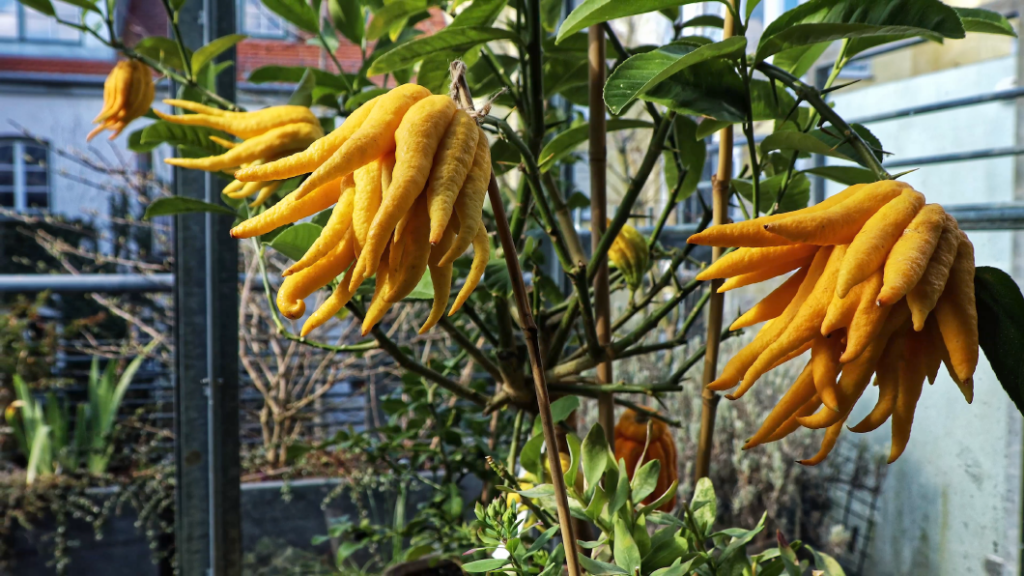
Now this one is probably the weirdest looking fruit on the list here—Buddha’s Hand. These unique finger-like citrus fruits are definitely eye-catching. And they’re perfect for the small-scale fruit garden since the trees grow to be between 8-15 feet tall and 6-12 feet wide. It even smells great, which is a good thing if you live outside U.S. zones 9-11 and you need to bring it indoors over the winter.
29. Orange
Orange trees come in a variety of fruit and plant sizes. At 6-10’ feet tall, the Calamondin orange is a naturally small tree whose growth can be further controlled by the size of its pot. It is often used as an ornamental but has edible fruit. Mandarin orange trees, like the Golden Nugget variety, which actually have tangerine genetics, are also compact 8-12 foot trees that are even frost tolerant to an extent. Even navel oranges like the Cara Cara and Lane Late can be grown in containers or in a small area, providing beautiful foliage as well as tasty fruit.
30. Lime
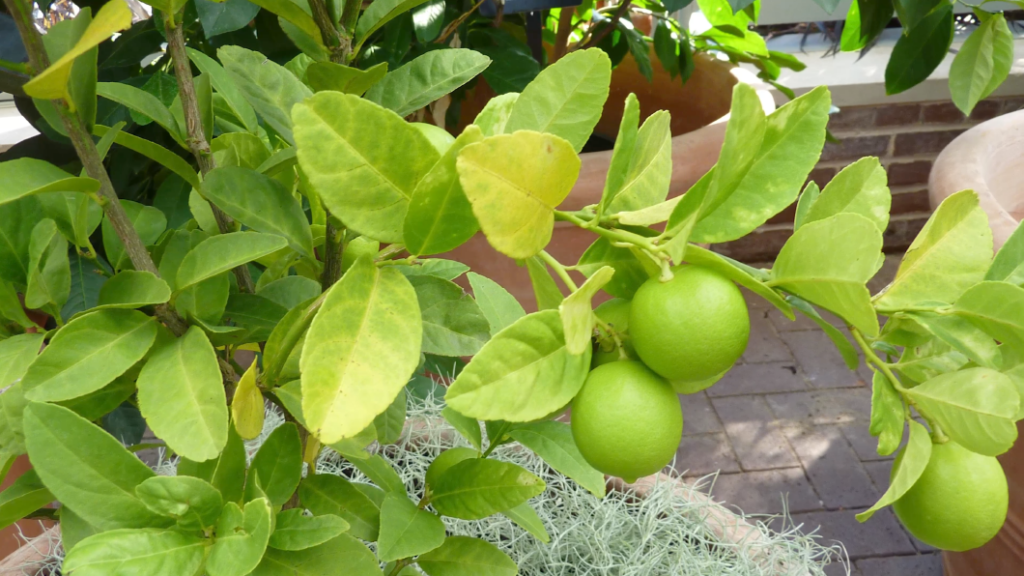
The most common lime species include Citrus × latifolia (Persian lime), Citrus aurantiifolia (Key lime), Citrus hystrix (Kaffir lime), and Citrus glauca (Desert lime). Persian limes, the type most commonly found in American grocery stores, include smaller varieties like Bearss, which grows to about 8 feet tall. Key Lime trees also stay compact and make attractive, productive potted plants. Appropriate for outdoor growth in zones 9-11, but appropriate for indoor growth just about everywhere, a miniature lime tree offers fruit that are small, with thin peels. They are chock-full of vitamin C and healthy antioxidants! Also keep an eye out for the 6-7 foot tall limequat citrus tree, a cross between a lime and kumquat. Speaking of kumquats…
31. Kumquat
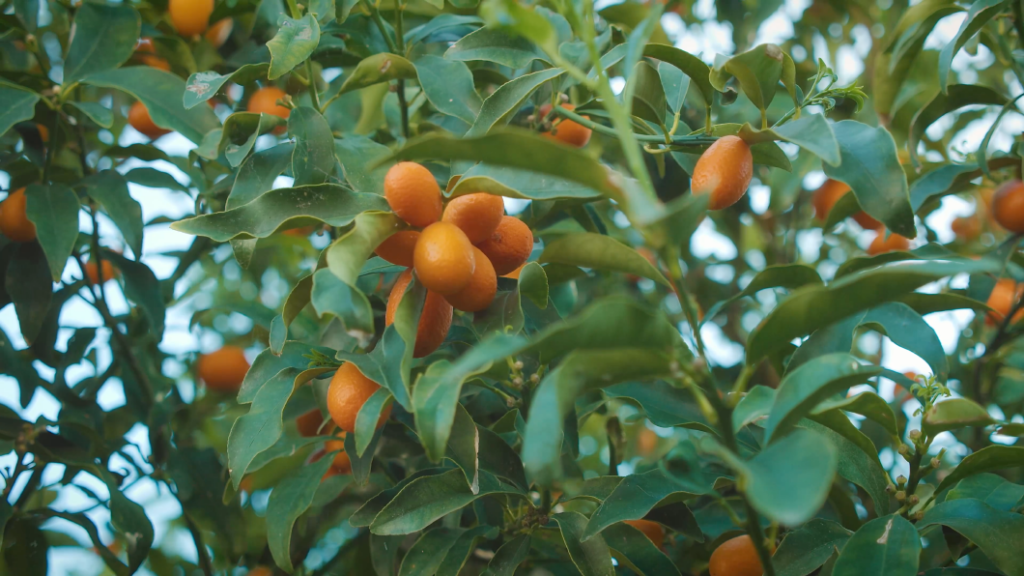
Kumquats may sound like loquats, but they’re not related—kumquats are actually a true citrus, while loquats belong to the same family as apples and pears. Kumquats stand out among citrus because they’re eaten whole—peel and all! Their small size and naturally dwarf growth habit (often under 8 feet tall) make them a fantastic choice for pots and patios. Two top varieties for home growers are Nagami, which has a tangy, tart bite, and Meiwa Sweet, which is milder and less acidic. Kumquats are also more cold-hardy than many citrus trees, tolerating temperatures as low as 20°F, making them a solid pick for zone-pushing citrus fans.
32. Pomegranate
Pomegranate trees, like the Dwarf Red, Sirenevyi, and Wonderful, are self-pollinating and compact plants, but it is important to note that their width often equals their height! Maturing at 8-10 ft. in each direction, you may need a little extra width to accommodate your pomegranate. If you plant them in zone 7 or lower, they will need some winter protection or to come indoors during the cold season.
33. Mulberry
Dwarf mulberries offer delicious, blackberry-like fruit and grow surprisingly well in containers. While varieties like the Dwarf Everbearing Mulberry can reach 10–15 feet tall and wide, they respond well to pruning and can be kept more compact, especially in pots. They’re fast growers and heavy producers.
I don’t know about you guys, but I was totally blown away by this list. Before researching this, I had no idea some of these were even options for me. I’m in zone 7, so I think I really need to up my indoor plant game. I’m super excited about incorporating some of these fruits into my garden.
If you guys have grown any of these plants indoors, in containers, or just in really tight spaces, we’d all love to hear about it. Let us know your favorite method—or which one you want to try next—in the comments!
Dwarf & Semi-Dwarf Fruit Trees
| Fruit | Outdoor Zones* | Mature Height ** | Pollinator Needed? |
| Apple, Gala | 5-8 | 8-10 ft. | yes |
| Apple, Golden Delicious | 4-9 | Semi Dwarf 12-15 ft. Dwarf 8-10 ft. | no |
| Apple, Honeycrisp | 3-8 | Semi Dwarf 12-15 ft. Dwarf 8-10 ft. | yes |
| Apple, McIntosh | 4-8 | 8-10 ft. | yes |
| Apple, Red Delicious | 4-8 | Semi Dwarf 12-15 ft. Dwarf 8-10 ft. | yes |
| Apple, Stark Crimson Spire | 4-8 | Semi Dwarf 12-15 ft. Dwarf 8-10 ft. | yes |
| Apple, Tangy Green Fruit Snack | 5A-8 | 8-10 ft. | yes |
| Apricot, Pixie-Cot | 6-9 | 8-10 ft. | no |
| Apricot, Sugar Pearls | 4-7 | 15 ft. | yes |
| Asian Pear, 20th Century | 5-9 | Semi Dwarf 12-15 ft. Dwarf 8-10 ft. | yes |
| Asian Pear, Chojuro | 5-8 | Semi Dwarf 12-15 ft. Dwarf 8-10 ft. | yes |
| Asian Pear, Peggy | 4-8 | Semi Dwarf 12-15 ft. Dwarf 8-10 ft. | yes |
| Avocado, Condo | 9-11 | 8-10 ft. | yes/no |
| Avocado, Holiday | 9-11 | 12-18 ft. | no |
| Banana, Cavendish | 9-10 | 8-10 ft. | no |
| Buddha’s Hand | 9-11 | 8-15 ft. | no |
| Cherry, Black Tartarian | 5-8 | Semi-Dwarf 15 – 18 ft. Dwarf 8 – 14 ft. | yes |
| Cherry, Emperor Francis | 5-7 | Semi-Dwarf 15 – 18 ft. Dwarf 8 – 14 ft. | yes |
| Cherry, English Morello | 4-9 | Mini-Dwarf 6ft. Dwarf 10 ft. | no |
| Cherry, Evans | 3-8 | 15 ft. | no |
| Cherry, Lapins | 5-9 | 8-14 ft. | no |
| Cherry, Montmorency | 4-7 | Semi Dwarf 12-15 ft. Dwarf 8-10 ft. | no |
| Crabapple, Lollipop | 4-8 | 8-10 ft. | no |
| Crabapple, Sargent | 4-8 | 8-10 ft. | no |
| Crabapple, Whitney | 3-9 | Semi Dwarf 12-15 ft. Dwarf 8-10 ft. | no |
| Dragonfruit | 9-11 | 5-10 ft. | no |
| Fig, Fignomenal | 6-11 | 2-3 ft. | no |
| Fig, Little Ruby | 4-6 | 7-10 ft. | no |
| Grapefruit, Cocktail | 9-11 | 10-15 ft. | no |
| Grapefruit, Melogold | 9-11 | 10-15 ft. | no |
| Guava, Ruby Supreme | 9-11 | 10 ft. | no |
| Jujube, Honey Jar | 5-9 | 15-20 ft. | no |
| Jujube, Lang | 5-10 | 18 ft. | yes |
| Jujube, Sugar Cane | 5-10 | 18 ft. | yes |
| Kumquat, Meiwa Sweet | 9-11 | 4-8 ft. | no |
| Kumquat, Nagami | 9-11 | 8 ft. | no |
| Lemon, Meyer | 8-11 | 8-10 ft. | no |
| Lemon, Variegated Pink Eureka | 8-11 | 10-15 ft. | no |
| Lime, Bearss | 9-11 | 8 ft. | no |
| Lime, Key Lime | 8-11 | 6-12 ft. | no |
| Lime, Limequat | 9-11 | 6-7 ft. | no |
| Loquat, Coppertone | 9-11 | 8 ft. | no |
| Mango, Glenn | 9-11 | 6-12 ft. | no |
| Mango, Valencia Pride | 9-11 | 6-12 ft. | no |
| Mulberry, Dwarf Everbearing | 5-10 | 10-15 ft. | no |
| Nectacot, Honey Pearls | 4-7 | 15 ft. | yes |
| Nectarine, Captain Crunch | 5-8 | 16 ft. | no |
| Nectarine, Fantasia | 5-9 | 12-15 ft. | no |
| Nectarine, Garden Delight | 6-9 | 4-6 ft. | no |
| Nectarine, Mericrest | 5-8 | 12-15 ft. | no |
| Olive, Arbequina | 7-9 | 8-10 ft. | no |
| Orange, Cara Cara | 8-11 | 15-20 ft. | no |
| Orange, Calamondin | 8-11 | 6-10 ft. | no |
| Orange, Golden Nugget | 8-11 | 8-12 ft. | no |
| Orange, Lane Late | 9-11 | 8 ft. | no |
| Pawpaw, NC-1 | 4-8 | 12-15 ft. | yes |
| Pawpaw, Prolific | 4-8 | 12-15 ft. | yes |
| Pawpaw, SAA Overleese | 4-8 | 12-15 ft. | yes |
| Peach, GaLa | 5-9 | 8-10 ft. | no |
| Peach, Loring | 5-8 | Semi Dwarf 12-15 ft. Dwarf 8-10 ft. | no |
| Peach, Newhaven | 5-9 | 12-15 ft. | no |
| Pear, Anjou | 5-8 | Semi Dwarf 12-15 ft. Dwarf 8-10 ft. | yes |
| Pear, Bartlett | 5-8 | Semi Dwarf 12-15 ft. Dwarf 8-10 ft. | yes |
| Persimmon, Ichi-Ki-Kei-Jiro | 6-9 | 8-10 ft. | no |
| Pineapple Guava | 8-10 | 10-15 ft. | yes |
| Pineapple, Florida Special | 9-11 | 3-6 ft. | no |
| Plum, Superior | 4-8 | 12-15 ft. | yes |
| Plumcot | 4-9 | 6-8 ft | yes |
| Pluot, Dapple Dandy | 6-9 | 12 ft. | yes |
| Pomegranate, Dwarf Red | 7-11 | 8-10 ft. | no |
| Pomegranate, Sirenevyi | 6-10 | 10-12 ft. | no |
| Pomegranate, Wonderful | 7-10 | 10-15 ft. | no |
| Tangerine, Dancy | 8-11 | 10-15 ft. | no |
**Can be kept as small as 75% of its mature height by pruning or planting in a container.
Sources
- All About Persimmons, Stark Bro’s
- Dragonfruit, University of Guam
- Flowering Crabapple Trees, Colorado State University Extension
- Growing Columnar Apple Trees in a Container, Stark Bro’s
- Home Fruit Production: Peach and Nectarine Culture, University of Missouri Extension
- PawPaw: Small Tree, Big Impact, National Park Service
- Plum Production in Maine, University of Maine Cooperative Extension
- Dwarf Fruit Trees Buyer’s Guide, Stark Bro’s
- How to Grow Pear Trees, Stark Bro’s
- How to Grow Peach Trees, Stark Bro’s
- How to Care for Citrus Trees in Containers & Successfully Grow Citrus Indoors, Stark Bro’s
- Growing Fruit Trees in Containers, Part 1, Stark Bro’s
- All About Dwarf Fruit Trees, Stark Bro’s
This post is sponsored by Stark Bro’s. View the full ReSprout advertising disclosure.




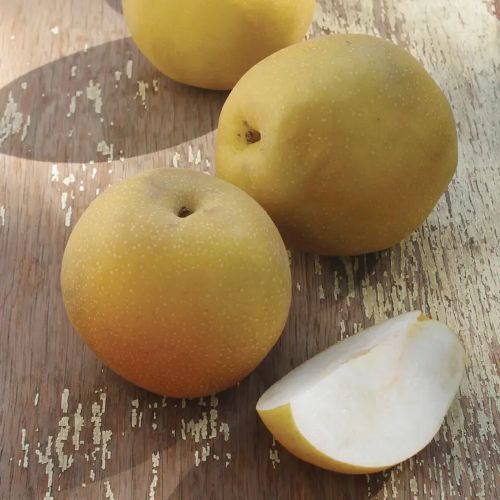
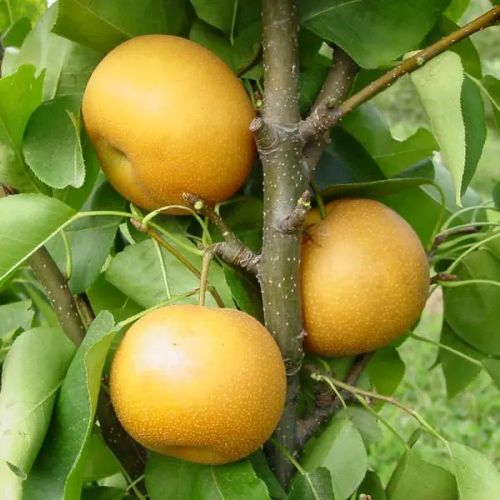
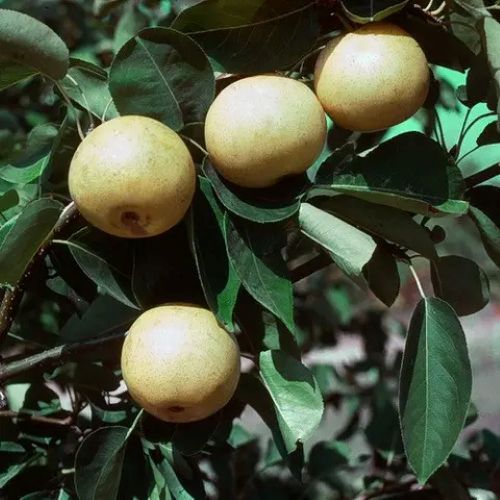

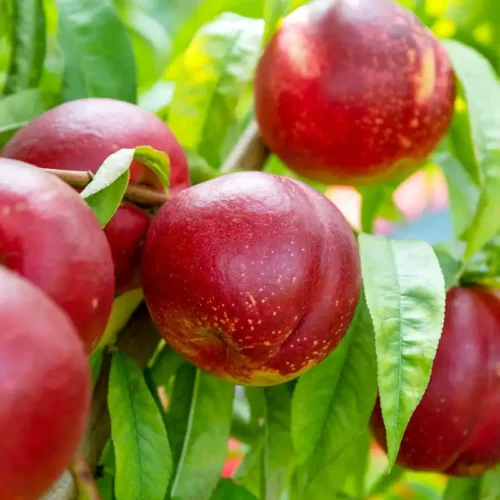
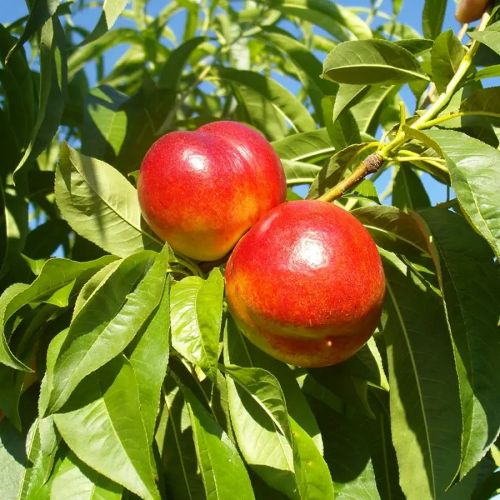
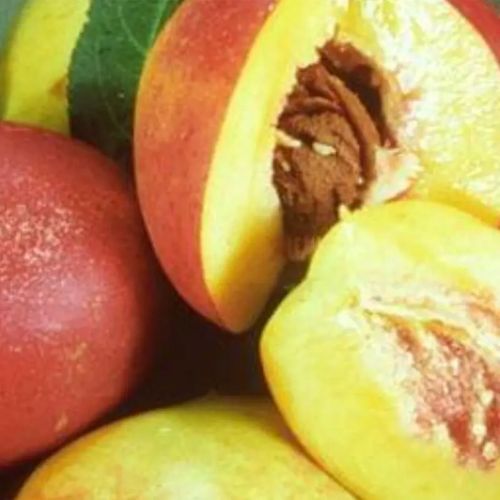





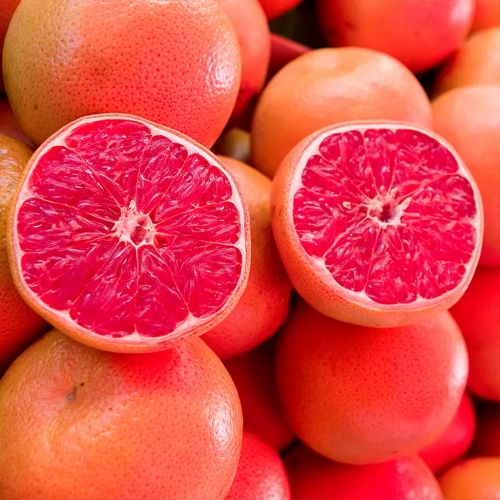
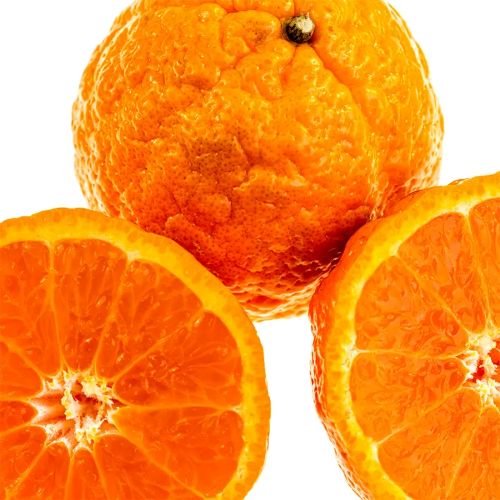
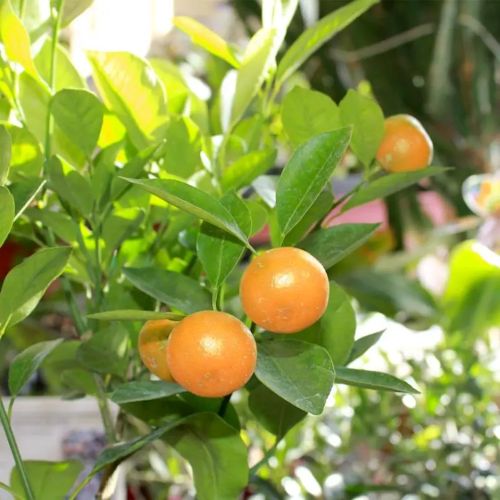
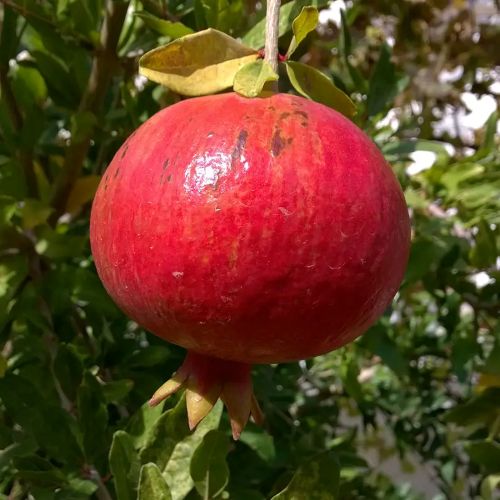
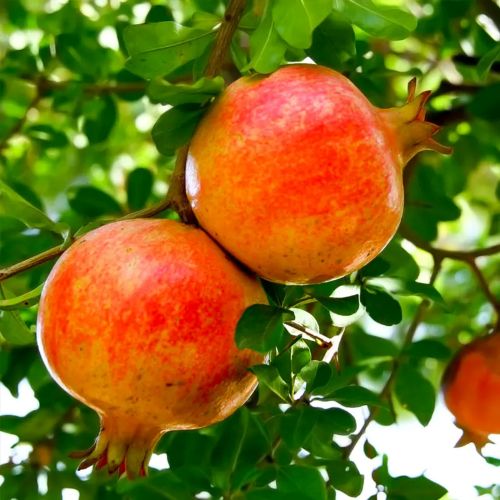
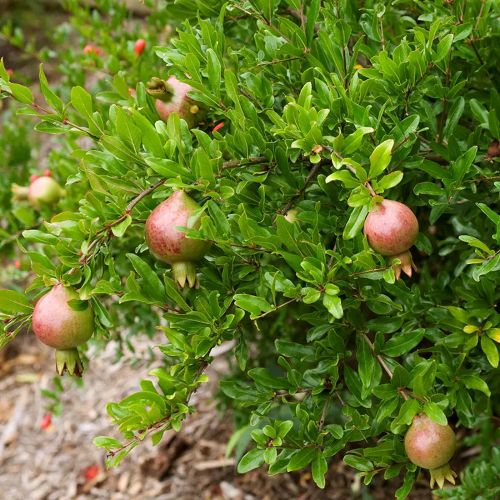

Leave a Reply